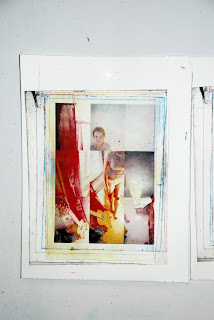
So this is the mega research preliminary stages of the work I am doing for the Daniel Danger show at the Richard Goodall Gallery. I am going to get into detail about some of the images but the basic working method here is to knock out a couple of variables which will get you the image you want. First you have to start out with material tests (what you tell the printer you are printing on), then exposure tests to determine time of exposure and percentage of dot, then development time. Once all four of these factors are worked out you end up with an image with no opening biting, solid blacks, solid whites and a wide range of mid-tones.




























